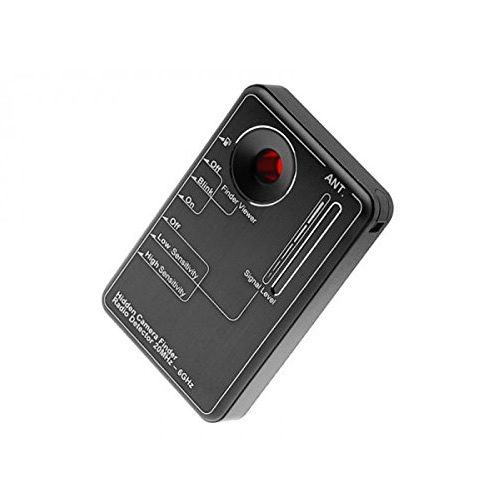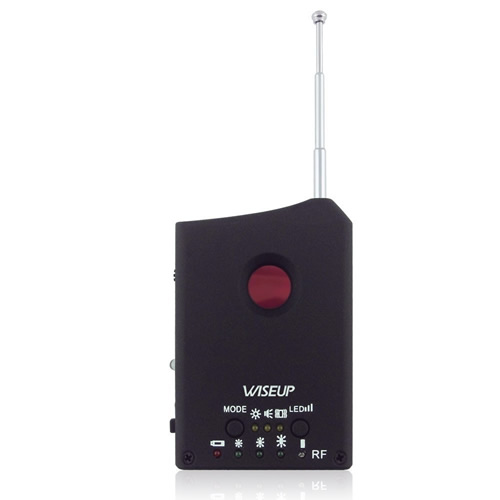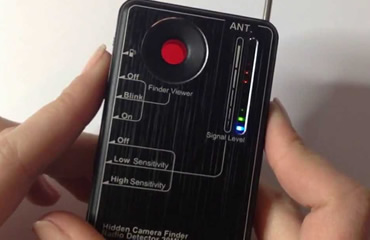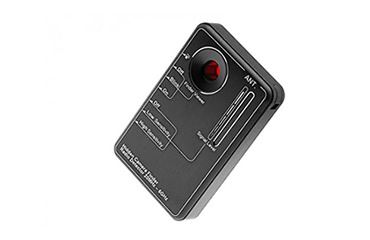Anti-Spy Detectors
Check out our article on the best anti-spy/bug detectors
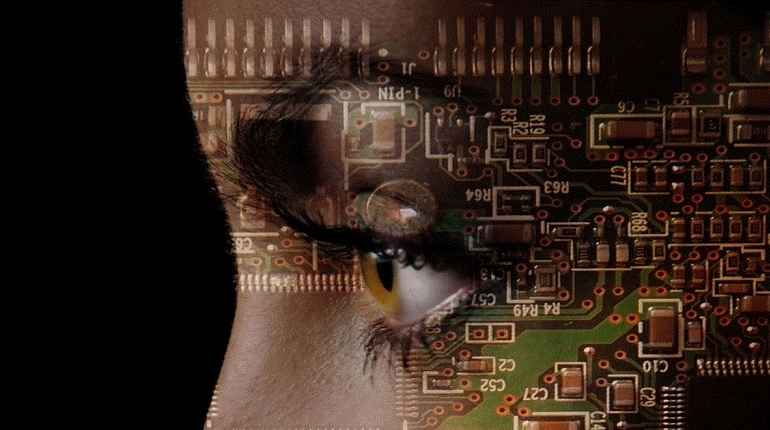
If you think you're being covertly monitored then you need to consider that most telephones and other common household items can be easily and quickly modified to function as a room listening device or bug. Tiny microphones and/or cameras can be attached or built-in to intercom systems, burglar alarms, doorbells, electrical mains sockets, computers, lamps or virtually anything else using a wire. Modern bugs can even look and function just like an everyday object, for example bugs can be hidden in pens that write, plug sockets that still provide power and light fittings that still light up.
Outside of the home is no safer, it only takes a couple of minutes to install a bug into a car and then remotely listen over any distance, even when the car is moving. Many bugs are operated by remote control and some even use secure encryption techniques to prevent anyone else gaining access. Buying a hidden camera/bug detector is no longer a sign of paranoia or perhaps even criminal behaviour. There are many ways other people can tap into your private life and cause embarrassment, or hack your private business meetings and outperform you.
Although listening devices are the most common type of bug, cameras are becoming more popular every day. They are now extremely small and sophisticated, getting pretty cheap to purchase and can now be hidden in almost anything. Sophisticated surveillance equipment is now very affordable and is so simple to deploy that almost anybody can use it. If you are worried about being overheard or observed, then you need to protect your privacy by using counter-surveillance products such as bug/camera detectors. Until recently counter surveillance products were bulky, expensive and complicated. But the detection equipment has become more sophisticated, yet cheaper and easier to use in recent years.
Modern bugs are so small and hard to find, that you could spend hours or even days trying to find them with the naked eye. Nowadays, cameras and listening devices can be hidden in the head of a screw or even the buttons on a shirt! If you have any suspicions that you might have been bugged by a business competitor, a distrustful spouse or anyone else seeking to discredit or embarrass you, then you have to search for bugs using a detector and then disable or remove them. Alternatively, once you know where the bugs are located, you could leave them in place and provide false information to mislead whomever is bugging you!
With surveillance technologies, much like other equipment, you really get what you pay for. Professional counter surveillance experts pay £10,000+ on bug detecting technology for carrying out "sweeps" of homes and offices at a high level. But of course most of us cannot afford to invest that amount and in any case it is unlikely we would need that level of sophistication when it comes to counter surveillance. Part of the reason for the high cost of professional bug detectors is the use of sophisticated filters which can filter out many ambient signals and false alarms, this saves the professionals time and money when sweeping an entire office block for example.
So the cheaper counter surveillance equipment will not have this sophisticated filtering and will therefore provide some false alarms which will need to be double checked. The other area in which professional equipment will have a serious advantage is in the frequency coverage and sensitivity. Although a frequency range of 1MHz to 6GHz is perfectly adequate to cover the majority of bugs, serious threat situations will require a detector that goes over 20GHz. More expensive units will also have a more accurate frequency range without blind spots.
Our favourite anti-spy detectors
-
Best Detector
Pocket Combi Bug Detector
£135 -
Budget Detector
WISEUP Anti-Spy Detector
£25
There are a number of different types of bugs which are available in the UK "over the counter" today. These devices include bugs which use standard RF (radio frequency) transmitters, GSM bugs which use mobile phone signals, Wi-Fi bugs which use local Wi-Fi signals, and highly sophisticated burst bugs which have a memory and can record all day and then transmit the entire days recording in a single short burst making them very hard to detect. Wireless cameras can be more difficult to detect but they still need to communicate via wireless, RF or the Internet. In addition, you can get quality bug detectors with a lens detector (a special eyepiece to look through which makes camera lenses shine or sparkle).
WISEUP Anti-Spy Bug Detector
One of the more popular budget bug detectors available is the WISEUP Anti-Spy Bug Detector which is available from online retail stores from around £25. This spy camera and GSM bug detector helps you to quickly find the signal and detect hidden audio/video bugs using frequency ranges from 1MHz to 6.5GHz. There is both an audio buzzer and vibration alert mode plus 4 LED indicators to show signal strength. The unit is powered by a rechargeable lithium polymer battery with around 6 hours operating battery life.
PRO6000GSM Bug Detector
A more professional solution would be the PRO6000GSM which is widely regarded as the 'industry standard' professional Bug Detector. However, this unit costs around £500! But it does feature the very latest technology and is particularly good at finding hidden devices including GPS trackers, GSM (mobile phone) based bugs as well as all more conventional bugging devices. The frequency range is an industry leading 0 to 6000 MHz (6 GHz) plus the PRO6000GSM offers the sensitivity required to find even the most sophisticated devices.
There is a 10 LED bar graph display to indicate signal strength of the bugging device plus an audio tone to help you pinpoint the device precisely. There is also a vibrate mode for more discreet use where if any signals are detected the PRO6000GSM will pulse vibrate silently, so you can keep it concealed in a jacket pocket. The PRO6000GSM has a special feature called the “Digital Peak Pulse” detector so it can locate modern burst transmission devices that only transmit momentarily and are usually missed using cheaper, less sophisticated bug detectors.


